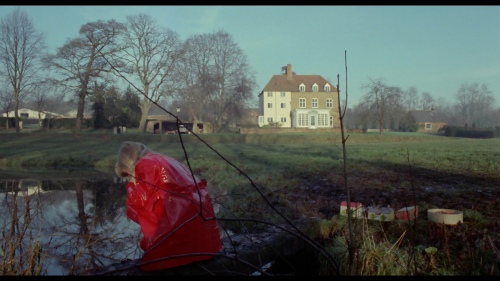Don’t Look Now
by Nandia Foteini Vlachou
.

(source of image: https://maniacosporfilme.wordpress.com/2010/10/17/2395/)
.
A drowned child lies at the center of Nicolas Roeg’s 1973 psychological, gothic horror film. A drowned child in a red coat. I have not seen the film and I cannot purport to analyze the weight of the title’s exhortation. It was difficult to push it out of memory though, as the photographs of drowned children multiplied in the media, and as distinctions started to be drawn between photographs disseminated by Syrian photographer Khaled Barakeh (shared in his Facebook profile, under the title “Multicultural Graveyard”), exploitation media, or on-line comments on the iconography of the photograph of the latest victim, and how it resembled a Christian Pietà.
This is precisely the problem with sharing these photographs. That distinctions cannot be drawn and maintain in place (they never can). That the images can be disseminated unthinkingly, with more or less respect towards the victims, in the service of objectives either laudable or less so. The problem starts with the very act of display – and the ingrained belief that we, as a society, are entitled to it. The most private moment of a human being’s existence (next to birth) is shared by thousands of people, without a shred of control on the outcome. Perhaps it is unrealistic, in this time and age, to demand any kind of control, or privacy, regarding personal data or digital media.
Fascination with the depiction of death has been an integral part of Western culture, from the realistic depiction of the tortures of saints to the production of death masks. Nevertheless, neither sanctity nor serenity can be expected, or achieved, here. There is no proper framework for the display of these images, and the attempt to integrate them in a visual tradition that would make them easier to process would defeat the very purpose of sharing them: shock value, for better (shaking people out of their complacency, opening their eyes to the extent of the crisis) or for worse (tabloid fodder). Being confronted by the images at every turn, I was unwittingly reminded of the following exchange from the pilot of the television series House M.D.
Rebecca: I just want to die with a little dignity.
House: There’s no such thing. Our bodies break down, sometimes when we’re ninety, sometimes before we’re even born, but it always happens and there’s never any dignity in it. I don’t care if you can walk, see, wipe your own ass, it’s always ugly. Always! You can live with dignity, you can’t die with it.
If it is not possible to die with dignity, let alone be depicted with dignity in the act of dying, wouldn’t it be better to stop pretending that circulating these photographs, even in the name of activism or the best imaginable of intentions, accomplishes anything?
.
* See also: Can the last person out of Syria please turn off the lights?
.

Great post! I’ve never looked or shared images of ISIS executions. I do consider it a matter of respect for their victims. I rarely share images of the atrocities committed in Palestine, no matter how strongly I feel about this issue. I am afraid they might become banal and they shoudn’t. I do feel, though, that these latest images, which I saw but did not share, have somehow managed to awake European citizens to the point of obliging Cameron to change his discourse. So they might be having an effect. It won’t last for ever and it shouldn’t become a banality either, but it might have just been the right thing to do at this moment.
LikeLike
I too will never watch the ISIS (or any other) images of brutality. I fear that such things have inured others to the reality of suffering. Since the graphic images from Vietnam being flicked over on daily newspapers, such pictures have become a part of everyday life, accepted in a way that they should never be.
As someone who attended many unspeakable events during 22 years as a paramedic in Central London, I would make the assertion that pictorial evidence of suffering rarely changes the behaviour of those who are determined to inflict it on others.
(And I have seen the film. It is quite good, as I recall. But it was a long time ago.)
Best wishes, Pete.
LikeLike